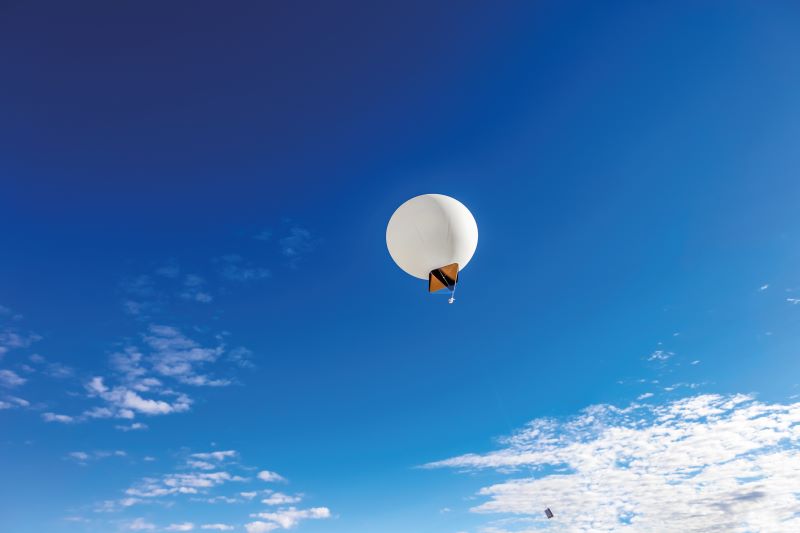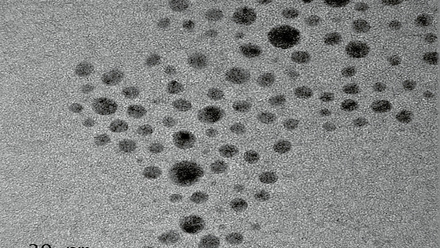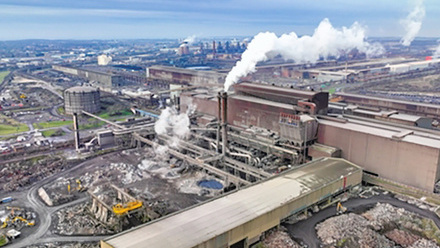Up, up and away
Can balloons made using graphene hold the future to aerospace technology?

To reach the UK’s 2050 net-zero target, it won’t be enough for transport systems and technologies to be net-zero themselves. They must actively reduce carbon emissions or the target will always stay out of reach. We need ‘Better than Net-Zero’ in the technology used across sectors.
Balloons might appear to be a technology from a past age, but with the enhancements of new materials they could be used to accelerate carbon reduction.
Researchers at Cranfield University, UK, are incorporating nanomaterials – like graphene, graphene oxide and layered silicates (such as montmorillonite, bentonite, saponite and hectorite) – into the balloon material via polymer matrices. This creates a mesh of pathways that significantly impede any kind of gas permeation.
However, there are challenges around compatibility. The layered silicates in the balloon material are hydrophilic and need to be modified. They are combined with hydrophobic polymers by long-chain cationic surfactants – i.e. surfactants with a positive charge and a longchain to make them less porous.
The nanoplatelets work as an effective barrier to the gas carried inside, and also enhance the balloon’s mechanical properties, together with greater thermal stability and resistance to flames.
The use of smaller-sized particles of graphene strengthens the balloon and increases durability. In other words, offering a safe, super-strength balloon with many more potential applications across transport sectors – including as an alternative to rockets in taking satellites and other payloads into space.
Smaller-scale satellite technologies have increased the potential in this field.
Micro-satellites weigh 1-100kg. Nano-satellites are based around a 10cm cube (expandable to up to 120cm). Also known as CubeSats, they weigh 0.1-10kg and have been developed since the late 1990s as a cost-effective way to carry out space exploration and a wide range of science experiments.
Then there are the miniaturised pico satellites (0.01-1kg) and femtosatellites (0.001-0.01kg) used for data exchange and testing software in space.
Taking off
The space industry and demand for rocket launches from both governments and businesses has boomed, specifically for satellite deployment, space exploration missions and tourism.
In 2015, there were 82 rocket launches into space, 180 by 2022 and the number is expected to keep rising.
Between 2009-18, rocket launches were found to have emitted a total of 140.5Kt of CO2 into the atmosphere. There was a 73% increase in emissions over the course of this period, caused both by more launches and greater use of kerosene-fuelled rockets.
UK space industry launches are expected to contribute around 1,563t of CO2 each year by 2027, primarily from rocket fuel burn.
Rocket launch emissions occur in the stratosphere and are a particular contributor to climate change because of this. This region contains 90% of atmospheric ozone.
Substantial amounts of soot or ‘black carbon’ are released.
According to a 2022 Journal of the Royal Society of New Zealand article, on Envisioning a sustainable future for space launches: a review of current research and policy, hydrochloric acid and alumina particles from solid rocket motors, have been shown to accelerate the reactions that cause damage to the ozone layer.
The use of unsymmetrical dimethylhydrazine as a rocket fuel has caused serious environmental damage and spikes in cancer cases around spaceports and test facilities.
In the summer of 2024, the first trials of hydrogen-filled balloons to replace rocket launches to space took place at Cranfield University. It is a significant development for the ‘Better than Net Zero’ campaign.
Just hot air?
Using balloons for space launches has been prevented in the past by the reliance on helium, an unsustainable option as a rare gas and one that involves a large carbon footprint in its production process.
However, hydrogen had been ruled out as impractical for long-duration flights – even though it has a strong lift efficiency, and is lightweight, cost effective and environmentally friendly. Made up of tiny molecules, hydrogen is known for its diffusion into any type of material, causing different forms of structural damage irrespective of the material.
Using traditional metals, for example, such as steel or aluminium, the hydrogen works its way into the lattice of the metal and causes it to become brittle over time, leading to cracking. And with polymers, using a carbon-fibre and glass-fibre tank with a coating inside, the hydrogen will penetrate through the lining.
Without additional care being given to how and where the tank empties and fills, the coating will start to buckle and ultimately fail. This is because of hydrogen’s ability to leak through plastics as well as steel and titanium.
Tests of the graphene balloon material at Cranfield have focused on finding the best balance between reducing the loss of hydrogen over extended periods, while at the same time maintaining its essential mechanical strength.
A major lesson from the global energy price crisis has been the value of having a diversity of supplies.
With hydrogen, a virtually zero-carbon-emissions fuel, we have the chance to build a more ideal system that is rooted in diversity from the beginning. A big hydrogen grid made up of large and small suppliers offers a network that is no longer necessarily dependent on particular natural resources.
This kind of diverse network will be critical in meeting demand for net-zero-energy solutions across industries. Transport, aviation, steel, cement and paper are all sectors that would benefit hugely from tapping into supplies of hydrogen.
Birds-eye view
Currently, access to hydrogen energy is only a viable option for communities and industries with pipelines providing a natural gas supply that can be adapted. In a hydrogen economy, transporting hydrogen to more remote regions, such as islands and inaccessible locations, will become critical. Shipping the fuel on tankers could be an option, but would come with an environmental cost.
In this context, hydrogen delivery by balloon offers a potential solution. There are technological challenges around this, namely, the need to travel at lower altitudes and along corridors that may well be close to populated areas, meaning safety must be the primary priority.
As a system of transportation into hard-to-reach locations, the balloons could also be used to deliver medical supplies and emergency support, having a longer range than drones and able to stay in the air for longer periods of time.
In 2011, Google’s research division stepped up its work on high-altitude balloons that could be used to provide Internet access for rural and remote communities, as well as businesses faced with huge costs for broadband.
Project Loon involved a network of helium-filled balloons that floated between 18 and 25km high, relying on data on wind directions and speeds to move them into the necessary locations. Customers used an antenna on their building to connect to the network and a ground-based station linked to an internet service provider.
Trials were carried out in areas of Kenya, Puerto Rico and New Zealand. But the spin-out company closed in 2021. Positioning was difficult to control, and the reliance on helium was both expensive and involved a carbon-intensive production process.
Early work suggests that a hydrogen balloon with unique control features, under development at Cranfield, would constitute a more stable and reliable platform for a sustainable solution in hard-to-reach areas. The transport balloon designs are being developed with the addition of a further reinforcement layer.
The first prototypes are being tested at Cranfield as part of an ongoing collaboration with a university in Malaysia, which aims to deliver initial findings in 2025.
The advantages mean the next generation of balloons are also being considered for improving the performance of weather balloons.
The UK’s Met Office sends more than 4,300 weather balloons into the sky every year around the UK, as well as in overseas locations, taking up positions close to the edge of space. The balloons are equipped with a radiosonde, which collects data during its journey through the atmosphere. It takes accurate measurements of temperature, moisture and wind, etc., transmitting radio signals back to a ground receiver.
The giant balloons currently used can be blown out of position and become unreliable, depending on changing wind currents and difficult weather conditions. Cranfield’s balloon design could be an attractive prospect.
The novel design offers better weight and sensors (and therefore possibly additional cargo), and resulting specifications for graphene-based weather balloons would have far more stability – i.e. they could be fixed to a location and controlled – as well as being a more sustainable, zero-carbon alternative.
New fuels and modes of transport will be some of the basic building blocks for a sustainable way of life. But to deliver a generation of ‘Better than Net Zero’ technologies – and to meet the UK’s carbon reduction targets – there’s also a need to look beyond the use of existing materials and their limitations.






